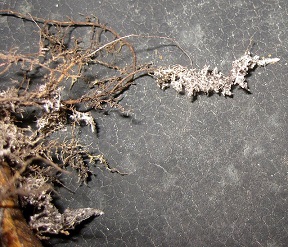Reforestation is an important instrument in the fight against climate change. Particularly in Europe, planting more trees would increase rainfall and reverse a drying trend. But do we know enough about woods, to be able to create healthy woodlands? New research sheds light on the great importance of fungi in this process.

Reforestation required
Large parts of Europe have been deforested in the past few centuries. The Netherlands and Ireland have just 11% forest cover, the United Kingdom (12%) and Denmark (13%) not much more. (Although Finland has a forest cover of 73%; Sweden, Slovenia, Latvia and Estonia all exceed 50% forest cover.) But there are many plans to increase woodland area. Although we must bear in mind that creating healthy woodlands is an enormous challenge.
An article in The Conversation by Aileen Baird and Francis Pope sheds light on the importance of fungi in this process. Firstly, many conditions must be met. We should plant the right trees in the right places. Trees adapted to the habitat will grow better and be less prone to diseases. And we should avoid planting trees in the wrong places, for instance on grasslands and wetlands, important ecosystems on their own. Above all we should tune the new trees to their corresponding habitats.
Fungi, often underrated
Fungi play an important and often underrated role in forest ecology. Beneficial mycorrhizal fungi form close relationships with trees. They grow around or within their roots. These fungi vastly extend the area from which trees harvest nutrients such as nitrogen and phosphorus from the soil. They may even be instrumental in communication between the trees in a forest. In return, the tree will deliver them sugars, generated through photosynthesis. In doing so, they can store in the soil up to 20% of the carbon taken up by the trees. Fungi also help decompose dead wood and leaves, making available for another cycle the nutrients contained in them. In short, they are essential for the health of the forest.

In the scientific paper underlying the article in the Conversation, the authors make a plea to maximise the benefits of beneficial fungi. First of all, we need to enlarge our knowledge of them. We just don’t know enough about fungi and their beneficial (and at times harmful) effect on woods. But we do know that ancient woodlands and old trees host a lot of beneficial fungi. Therefore, even though we don’t know the details, we should protect these, as sources from which their rich fungal communities can spread. The authors tell us that we ‘don’t know enough about what happens to fungi in the soil when we plant trees. We don’t know which species are present before trees are planted and whether they change afterwards.’ In short, we still need to learn a lot in order to be able to consciously grow healthy forests.
Climate change
It is remarkable how little attention is given to mycorrhizal fungi in the literature on climate change. Much attention goes to the aboveground carbon storage (the wood), but the stable storage of three times this amount of carbon in the underground almost goes unnoticed. And we are destroying the planet’s fungal networks at an alarming rate. The UN Food and Agricultural Organization FAO projects that based on current trends, more than 90% of the Earth’s soil will be degraded by 2050. This is the result of intensive farming practices (ploughing, fertilizers, pesticides and fungicides). Of logging, that severely reduces the abundance of mycorrhizal fungi. And through nitrogen pollution, from fossil fuel combustion and agricultural fertilizer.
‘Mycorrhizal fungal networks and the nutrient flows and processes they manage should be considered a global public good, analogous to clean air and water,’ according to the authors of the article in The Guardian. Mycorrhizal fungi are keystone organisms that support planetary biodiversity. Fungal networks form a sticky living seam that holds soil together. They increase the volume of water that the soil can absorb, reducing the quantity of nutrients leached out of the soil by rainfall by as much as 50%. They make plants less susceptible to drought and more resistant to salinity and heavy metals. They even boost the ability of plants to fight off attacks from pests by stimulating the production of defensive chemicals.
We need to know more about fungi
New research should allow us to answer important questions. Which fungal species will help us to store more carbon in forests? Are there any fungal species threatened with extinction? Does climate change affect fungal health? And which fungi can cause diseases? For not all fungi are beneficial. Some spread diseases that can kill trees, like ash dieback or Chalara fraxinea that threatens the entire population of ash trees (in Europe); and beyond the trees, maybe many other organisms that rely on them to survive.
All in all, we should handle more carefully the fungal communities in our woodlands. Research them, learn to know them. Know how they influence the health of the trees, indeed of forests as a whole. Monitor the spread of fungal diseases and pests in the woods. We need forests, if only because they are an instrument with which we can control climate change. And for the large number of services they lend us.
Interesting? Then also read:
Who are we? The microbiome revisited
Cooperation in living nature
Mother Earth Day: let us protect healthy soils
